Review: 2014 Chevrolet Silverado

Instructions:
Step 1. Put on Fanfare for the Common Man.
Step 2. Light a hand-rolled cigarette. Take a deep drag.
Step 3. Begin reading aloud with as low and gravelly a voice as you can muster.
Your script: Pickup trucks are America. In the vast expanses that make up this country, they feel completely comfortable with their bulk. These are the broad-shouldered blue-collar working class of the vehicular world. Just like the people that drive them, these trucks are alternately unembellished hard workers or rhinestone cowboys. They give of their bodies and brawn to get.work.done. At every disaster, you’ll find trucks. Construction sites, too.
Trucks build things up, break things down, and clear the way. They are the last stand of dominance for the once-muscular North American auto industry.
Okay, that’s enough of that nonsense. American pickup trucks are both deeply loved and uniquely evolved for our landscape and way of life. That doesn’t mean that the dominant domestic automakers can be arrogant and take the sales for granted. We saw how that worked out with cars.
That’s why they bash each other’s brains out with their trucks, swinging the cudgels of ever-increasing tow ratings, powertrain options, or luxury tack shop interiors by Nudie Cohn. When a pickup truck gets
The recently-launched 2014 Chevrolet Silverado has hit the dealer lots and the press fleets. The short take-away is this: the Silverado is more car-like, very fuel efficient for its class, and has a few little oddities. Those assessments are partly right.
The Silverado is not like a car. It is a truck, and as such, it rides like a truck. A very good-riding truck in the 1500 LT 2WD trim I drove. The frame is stiff, the suspension is well-tuned, and the steering is precise, all pluses. The new hydraulic cab mounts and rack and pinion steering really pay off. Even if the leaf springs on the rear axle aren’t the wispy cloud of compliance that the Ram’s coil springs are, the Silverado has a higher tow rating when equipped just right.
Inside, it is very quiet. So much so that even with your foot deep into the new 5.3 liter Ecotec3 V8, it sounds like someone else’s vehicle is roaring away. The engine sounds great, and it’s very punchy, so hearing more of it would be welcome. The new cab has its doors inset into its sides, lots of high-strength steel and hydroformed structural elements, and it’s shockingly quiet.
Would that the seats were more comfortable for spending long hours. The squishy cloth-upholstered 40/20/40 front bench seat in the Silverado LT I drove was supportive in the you’re-not-on-the-floor sense, but long-haul comfort is lacking, and it made me fidget after a while. Also weird: the steering wheel is offset toward the center of the truck, just like the early Dodge Caravans, and it feels just as strange now.
Despite being a rear-driver, LT trim includes Z71 suspension with Rancho shocks and a locking differential; enough equipment to get you hopelessly stuck should you believe the “off-road suspension” claim Chevy makes for the heavier duty chassis. Machined aluminum wheels, 17-inchers with all-terrain tires, fog lights, chromed bumpers and recovery hooks are standard for the LT, as well. The tailgate that doesn’t slam and integrated bumper steps are nice touches.
There’s now a single cabin design with a dashboard that looks weirder in pictures than in person. This particular truck had the LT Plus Package ($795) and All Star Edition ($1,830) which means some up-fitting. The standard MyLink audio system with its 4.2” LCD gets traded out for an 8” color touchscreen interface that also displays the rear camera’s view, but navigation is still optional. You do get six months of OnStar Directions and Connections service, which can pipe turn by turn navigation instructions into the system. The steering column gets notchy 1970s-grade tilt adjustment, and a separate lever adjusts reach. Other All Star Edition goodies are 18” wheels, interior AC power outlet, remote start, power driver’s seat and climate control. The LT Plus package contributes a power-sliding rear window, rear park assist, power-adjustable pedals and universal remote. None of this stuff helps the Silverado work any harder.
Of course, every Silverado you can currently buy is optioned-up. You can’t even get the standard configuration of new 4.3 liter standard V6 and six-speed Hydramatic yet. Not that the 5.3 liter V8 based on the C7 Corvette engine is any kind of penalty, but it does cost an extra $895. It’s punchy as hell, though, and still spat back 21 miles per gallon in a week of mixed, mostly-highway driving. A four-wheel drive configuration would have probably cost a couple mpg in the same conditions. That’s impressive economy, and it’s likely to get better when an already-in-the-works transmission with more ratios becomes available. The six-speed jumps right to the highest gear it can as fast as it can, so you wind up doing 20 miles an hour with the tachometer near idle before dropping down two gears and moving off smartly,. It’s kind of a herky-jerky way to get down the road.
With a few more useful bits of optioning, a trailer brake controller, chrome runing boards, heated front seats, and moveable tie-downs in the bed, the bottom line came to $40,910. That’s a lot of dough for a truck that still has a long way to go on the options and luxury side of the ledger. It might be just me, but for that kind of debt, I’m going to at least want to be breaking wind on leather and have a navigation system to tell me I’m lost. It’s also a lot of extra crap you don’t need if you’re just looking to get some work out of the truck, in which case the basic W/T configuration is your bogey.
Look at the full-size truck landscape, and it’s clear that right now, the Silverado is on top, though maybe by default. In 1500 trim, it’s more efficient and lighter than the comparable Ram or F-Series. The Ram has a high-quality interior, comfortable ride and willing powertrains. The Silverado is in the fight, though, and it’s a lot lighter on its feet and less thirsty at the gas pump. Both point up how shamefully old and crappy the F-Series cab is, though the rest of that truck is nothing to be trifled with.
Closing the door and shutting out the noise of the jobsite or the stress of meeting those Ag Loan payments and John Deere financial responsibilities during a dust-bowl drought is something the Silverado is very good at. It’ll willingly yank some steers to auction or drag your travel trailer to the KOA campsite for some vacation. The primacy of the pushrod engine in terms of packaging efficiency and durability is a high point, as is the Hydramatic transmission and increased use of aluminum in the chassis to keep weight down.
This is why, for now, the Silverado is on top. When the new F-Series debuts with its aluminum cab and weight loss equal to a trio of morbidly obese Americans (you know, average folk), it might be a different story, but that’s not going to make the Silverado a bad choice overnight.
See, that’s the thing with the full-size pickup field. Just take a scattershot approach and you’ll be fine. You’ll get your work out of the truck. If you’re looking for all the frosting on the cake, then the brand becomes important. While the Silverado can be outfitted that way, it still doesn’t quite measure up to a Nash-Vegas-trimmed Ram. But there’s not a truck on the market right now that blends efficiency, muscle and capability as well as the Silverado, and that’s why it lives up to its big deal billing. For now.

More by Winston Braithwaite
Latest Car Reviews
Read moreLatest Product Reviews
Read moreRecent Comments
- Theflyersfan After looking it over, Honda, I want royalties for this one: The Honda Yawn.
- V8fairy Not scared, but I would be reluctant to put my trust in it. The technology is just not quite there yet
- V8fairy Headlights that switch on/off with the ignition - similar to the requirement that Sweden has- lights must run any time the car is on.Definitely knobs and buttons, touchscreens should only be for navigation and phone mirroring and configuration of non essential items like stereo balance/ fade etc>Bagpipes for following too close.A following distance warning system - I'd be happy to see made mandatory. And bagpipes would be a good choice for this, so hard to put up with!ABS probably should be a mandatory requirementI personally would like to have blind spot monitoring, although should absolutely NOT be mandatory. Is there a blind spot monitoring kit that could be rerofitted to a 1980 Cadillac?
- IBx1 A manual transmission
- Bd2 All these inane posts (often referencing Hyundai, Kia) the past week are by "Anal" who has been using my handle, so just ignore them...



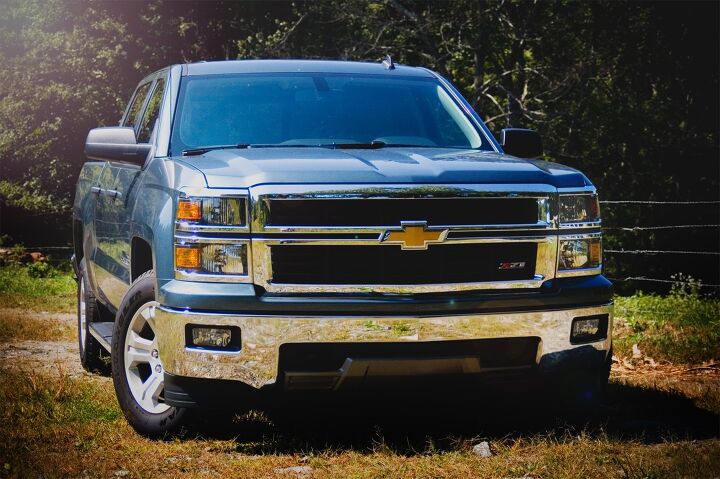
























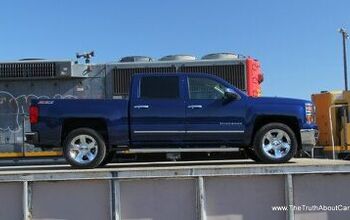
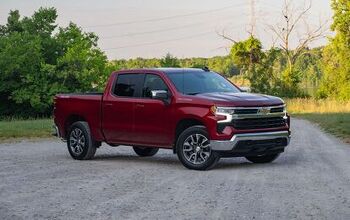
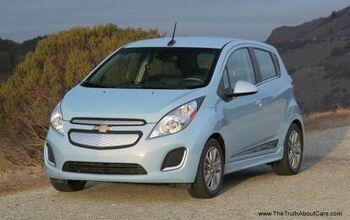
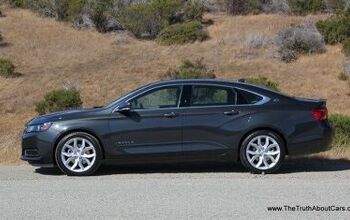











Comments
Join the conversation
Very well said, Lou. While I do love cars (despite my handle ;))...I loves me some trucks too...which is why I have one. And you're right, they are a versatile, cost effective vehicle if you only have one DD even while factoring in the increased fuel cost. I always get a kick when reading the "truck threads" because 90% of the comments are from those preaching that trucks are wasteful for anyone who isn't a contractor hauling stuff 24/7, just for posers, too many features, too big, blah, blah, blah. Thanks goodness, we're all different and have different wants/needs because I'd hang myself if I had to drive a Panther or brown diesel station wagon every day!
'4.3 liter standard V6' What's new about it? Just wondering. I keep expecting this mill to go extinct.